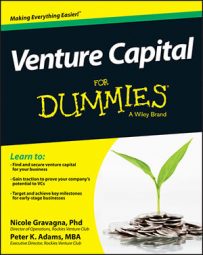Your pitch deck needs to explain your future milestones to your potential investors. Any milestone that is key to achieving your goals is also a risk. Any major milestone that you have completed can be considered traction or track record. Communicating these together allows investors to understand your ability to execute.
Investors are always thinking about risk. If you don’t tell them in your pitch about your real risks, they’ll imagine even worse risks. The trick with this topic is to acknowledge the upcoming milestones while at the same time show that you are purposefully working toward them, one at a time. Include the following information:
Lay out a few of the major milestones that stand between now and your exit. Communicate your milestones in a way that illustrates your current hurdles and shows that you are approaching them with thoughtful planning.
Be prepared to talk at great length about your plan to overcome difficult aspects of growing your business if investors want to discuss this aspect in more detail during the Q&A session that follows your presentation.
Discuss past milestones. By mentioning a few challenges you and your team have overcome in the past, you give credibility to your company and your future plans. Highlighting past milestones that you’ve overcome helps venture capitalists see that you’re capable of great progress in the future.
The risk stairs shown in the figure are a clear way to communicate your plans, path, and progress all in one slide. You can use the risk stairs to show how your risk will decrease. (This image is an adaptation from Adam Rentchler’s risk stairs.)
Be sure to include the risks that your team has already overcome. This helps your investor understand your progress to date and the effectiveness of your team. Use this slide as a conversation starter.
![[Credit: Illustration by Wiley, Composition Services Graphics]](https://www.dummies.com/wp-content/uploads/401196.image0.jpg)
Following are some examples of common milestones:
Hiring a key person with specific skills
Securing a patent
Signing your first big customer
Overcoming or addressing regulatory challenges associated with making or selling the product (FDA, USDA, EPA)
Finding an affordable manufacturer
Creating the working prototype
Being first to market

